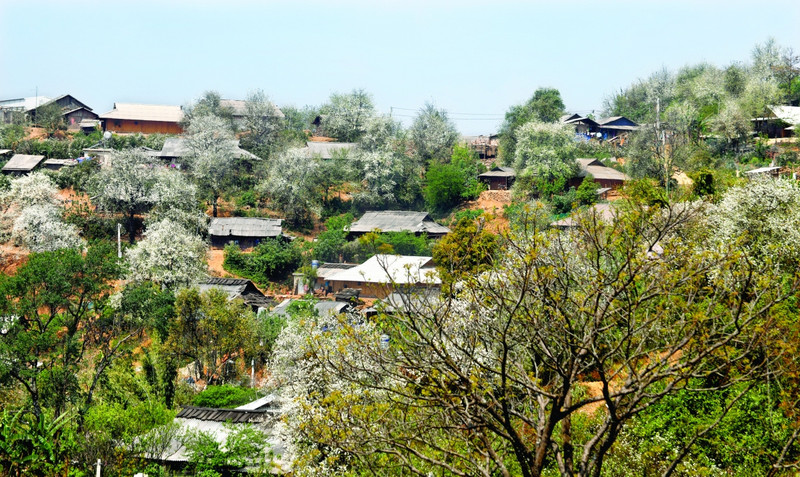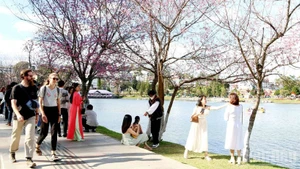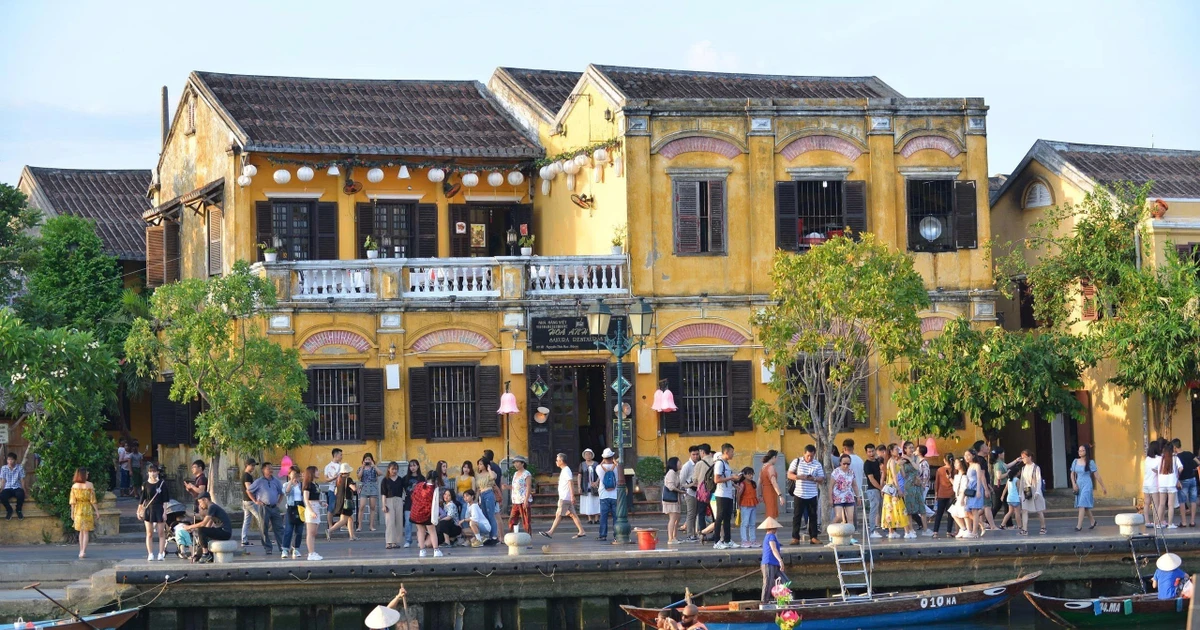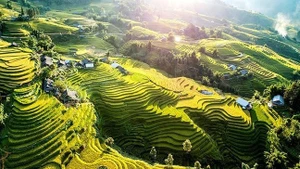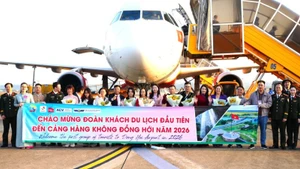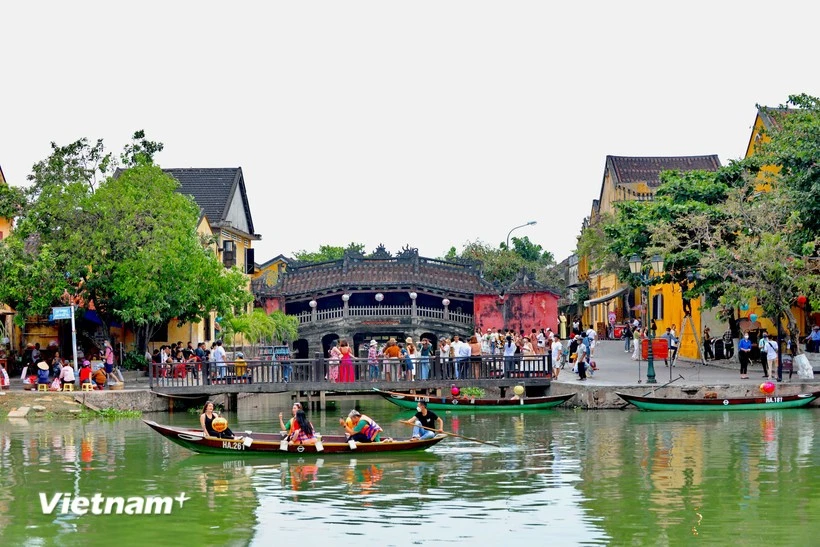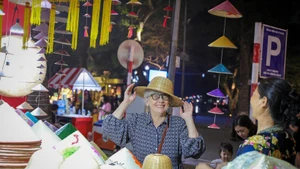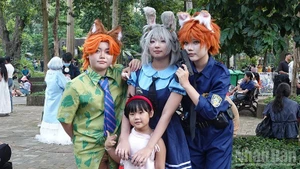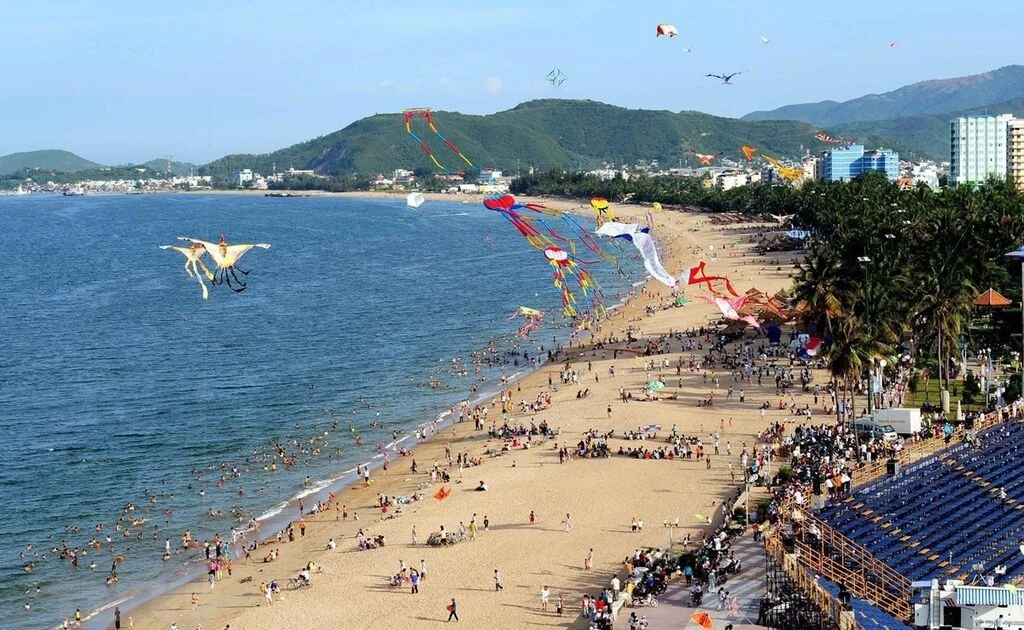Once a remote area, tourism in Ngoc Chien Commune is now connected to many other popular tourist attractions in the region, such as Moc Chau and Bac Yen in Son La Province; and Mu Cang Chai and Tram Tau in Yen Bai Province.
In March, the commune is adorned with romantic purple bauhinia flowers and red silk-cotton flowers, which are blooming across the green valleys and the winding passes, wining the heart of every visitor to the locality.
Ngoc Chien Commune is home to 15 villages with four resident ethnic groups: Thai, Mong, La Ha, and Kinh. Despite their cultural differences, they live in harmony together among the mountains and forests.
‘Son tra’, also known as ‘tao meo’ (Docynia indica), is a distinctive tree that holds great economic value for the Mong ethnic people in the northwest region and Son La Province in particular. In recent years, it has significantly contributed to the regional economic growth and improved the livelihoods of the local population.
 |
| ‘Son tra’ flower has five ivory white petals and yellow pistils |
‘Son tra’ flower has five ivory white petals and yellow pistils. The flowers bloom when the leaves have fallen, creating beautiful white flower clusters.
This March, Ngoc Chien Commune was officially recognised as the largest Son Tra flower forest in the country.
Located at 2,000-2,300 metres above sea level, thousands of hectares of ‘son tra’ trees grown by local Mong ethnic people in Nam Nghiep Village, Ngoc Chien Commune, start blooming from mid-February to early April, turning this place into an impressively beautiful space full of vitality.
At several times of the day, visitors can admire the blooming white flowers and amidst a sea of floating white clouds.
Visitors to Nam Nghiep Village can trek along trails under the lush green forest canopy and explore magnificent waterfalls and stunning caves.
The village now has seven homestays. At night, the village becomes quieter and darker. Hosts and visitors gather together for chats in both Kinh and Mong ethnic languages beside a flickering fire.
Backpackers who don’t want to stay at a local homestay with the hosts can camp under the shadow of old-aged ‘son tra’ trees, which is worth experiencing.
Those who miss a trip to Nam Nghiep Village during the blooming season can visit the village around September and October, when ‘son tra’ flower turn into ripe red fruits.
During this period, they can admire the golden yellow rice fields in the neighbouring villages of Luoi, Muong Chien, and Na Tau in Ngoc Chien Commune.
